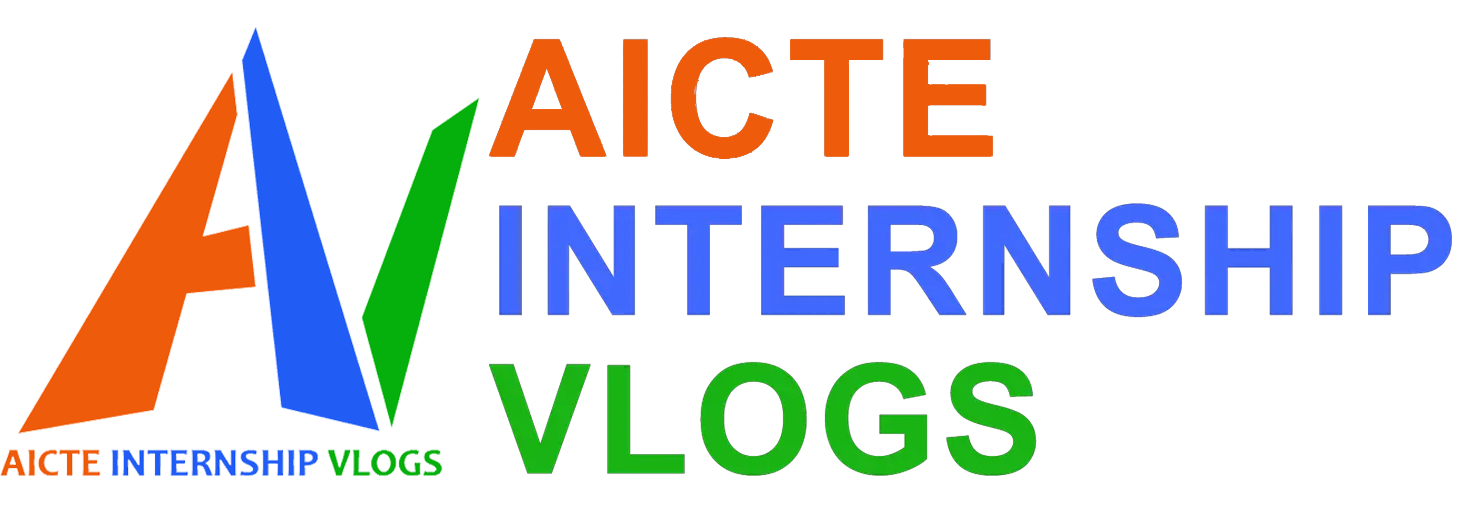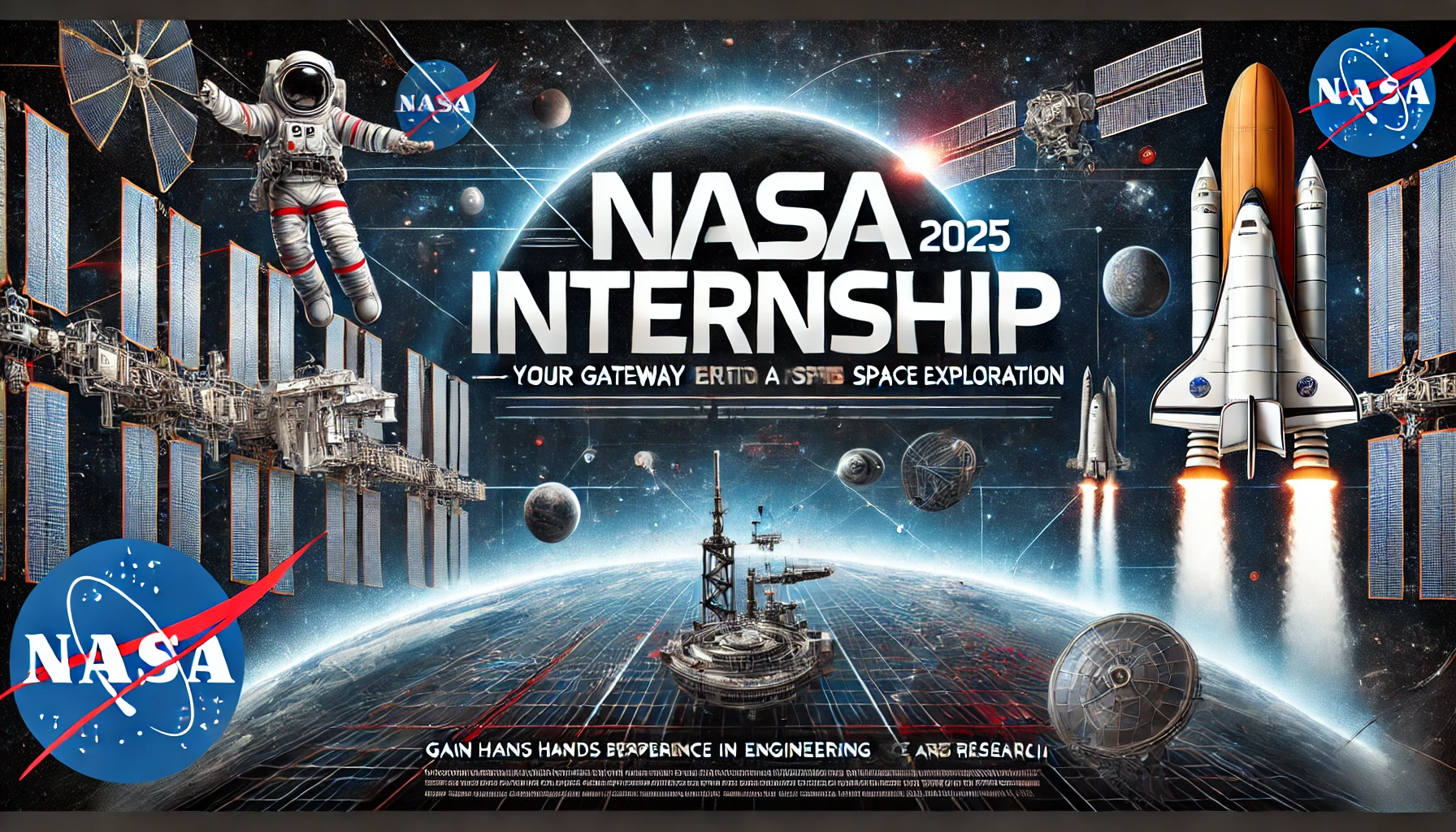The world of space exploration is vast, exciting, and filled with opportunities for passionate students. One of the most esteemed opportunities available today is the NASA Internship program. This comprehensive blog post explores the program details, eligibility criteria, benefits, learning outcomes, internship structure, application process, and certification details. Whether you are a high school student eager to explore science and technology or a college student looking to boost your career, this guide helps you join a prestigious initiative shaping the future of space exploration.
Program Details in NASA
NASA offers a variety of internship programs that provide hands-on experience in science, technology, aeronautics, and space exploration. Two primary programs stand out: the Office of STEM Engagement (OSTEM) paid internships and the Pathways program. NASA offers a variety of internship programs that provide hands-on experience in science, technology, aeronautics, and space exploration. Two primary programs stand out: the Office of STEM Engagement (OSTEM) paid internships and the Pathways program.
OSTEM NASA Internships
OSTEM internships provide practical work experience related to NASA’s mission. In these internships, students gain practical work experience that is directly related to NASA’s mission. The program provides a platform for emerging talents to engage in research and development projects, offering them the chance to make meaningful contributions while learning from mentors who are experts in their respective fields. Participants can choose to work on a full-time or part-time basis, and their assignments may take place at one of NASA’s numerous centers or facilities.
Pathways of NASA Internships
The Pathways program is aimed at current students and recent graduates. It offers paid internships that can lead to full-time employment with NASA after graduation. Interns in this program typically pursue degrees in science, technology, engineering, or mathematics (STEM).
International Internships
In addition to the domestic opportunities, NASA also offers internships to international students from countries with which NASA has a current agreement. These internships are available to international students from countries with which NASA has a current agreement. This inclusive approach ensures that global talents can contribute to the advancements in space exploration and benefit from the unique learning environment that NASA offers.
Eligibility Criteria for NASA Internship
To help you determine whether you qualify for these internships, it is crucial to understand the eligibility criteria associated with each program. The requirements vary slightly among the OSTEM Intern, Pathways Intern, and International Intern categories.
Citizenship
- OSTEM Intern and Pathways Intern: Applicants must be U.S. citizens.
- International Intern: Candidates must be citizens of a country with a current agreement with NASA.
Academic Requirements
- GPA Standards:
- For OSTEM Interns, a minimum GPA of 3.0 on a 4.0 scale is required.
- Pathways Interns must have at least a 2.9 GPA on a 4.0 scale.
- International Interns are expected to maintain a high academic standing, though specific GPA requirements are not explicitly defined.
Enrollment Status
- General Enrollment:
All applicants should be enrolled as students at an accredited educational institution. - Additional Enrollment Requirements for OSTEM Interns:
Applicants must be degree or certificate-seeking students currently enrolled or accepted for enrollment at an accredited educational institution on at least a half-time basis. Furthermore, candidates should have completed a minimum of 15 semester hours (or 23 quarter hours) and must be able to work at least 480 hours before completing their degree or certificate requirements. - Enrollment for Pathways Interns:
These applicants should be pursuing an undergraduate or graduate degree in a STEM field that aligns with NASA’s mission priorities.
Age and Language Proficiency
- Age Requirement:
Both OSTEM and Pathways Interns must be at least 16 years old. For international applicants, the age criteria remain consistent. - Language Skills:
All candidates are expected to communicate proficiently in English, ensuring they can collaborate effectively with mentors and team members.
Additional Qualities
International Intern candidates must also demonstrate an active interest in the U.S. space program. This requirement highlights NASA’s commitment to fostering a diverse and globally engaged community of aspiring scientists and engineers.
Benefits of the NASA Internship Program
Participating in a NASA Internship offers numerous advantages that extend far beyond the immediate learning experience. Below are some of the key benefits that students can expect:
Hands-On Experience
Interns are immersed in real-world projects where they apply theoretical knowledge to practical challenges. This experience is invaluable and often acts as a springboard for future research or professional endeavors. Working on live projects helps interns understand the intricacies of scientific research and technological innovation.
Mentorship and Networking
One of the most significant benefits is the opportunity to work closely with seasoned professionals. NASA mentors provide guidance, share expertise, and help interns navigate complex projects. This mentorship not only enhances technical skills but also builds lasting relationships and professional networks that are crucial for career development.
Career Readiness
The internship program is structured to enhance career readiness. Interns build their resumes, gain critical work experience, and develop soft skills such as communication, teamwork, and problem-solving. These experiences are highly valued by employers and can open doors to future employment opportunities, especially within NASA.
Financial Support
Most interns receive a paid stipend based on their academic level and the duration of the internship session. This financial support can be a significant advantage for students who are balancing academic responsibilities with financial needs, particularly those who rely on internships as a primary source of income.
Exposure to Advanced Technologies
Interns have the chance to work with cutting-edge technologies and methodologies. This exposure equips them with knowledge that is at the forefront of scientific research and innovation, making them highly competitive in the job market.
Personal Growth and Confidence
The rigorous environment at NASA helps interns develop not only professionally but also personally. The challenges encountered during the internship foster resilience, critical thinking, and self-confidence, all of which are essential qualities for a successful career in any field.
Learning Outcomes of NASA Internship
Participating in a NASA Internship is a transformative experience that yields several critical learning outcomes:
Enhanced Technical Skills
Interns gain proficiency in various scientific and technical disciplines. Whether you are working in engineering, data analysis, or research, the skills acquired during the internship are applicable to numerous career paths. For instance, students may learn advanced programming techniques, experiment with innovative materials, or participate in the design and testing of new aerospace components.
Critical Thinking and Problem-Solving
Working on challenging projects encourages interns to think critically and devise innovative solutions. These problem-solving skills are honed in an environment where creative ideas are not only welcomed but also essential for overcoming complex challenges.
Improved Communication Skills
Effective communication is a cornerstone of success in any professional setting. Interns are encouraged to articulate their ideas clearly and collaborate with team members from diverse backgrounds. This improved communication ability is a significant asset in both academic and professional contexts.
Collaborative Experience
Teamwork is a fundamental aspect of NASA’s internship programs. Interns learn how to work collaboratively in diverse teams, gaining insights into different perspectives and approaches. This collaborative experience is crucial in today’s globalized work environment, where cross-functional teams drive innovation.
Exposure to Research Methodologies
Interns become familiar with various research methodologies and data analysis techniques. This exposure enables them to understand the research process comprehensively—from hypothesis formulation to data collection and interpretation—thereby laying a strong foundation for future academic or research pursuits.
Professional and Personal Development
Beyond technical and academic growth, the internship experience fosters personal development. Interns learn time management, leadership, and adaptability, which are invaluable in any career path. The challenges and successes experienced during the internship contribute significantly to overall personal growth.
Internship Structure
NASA’s internship programs are thoughtfully structured to provide a balanced and enriching experience. The following sections outline the structure and key components of the internship program.
Work Environment
Interns have the flexibility to work in various environments depending on the project requirements. Projects may be conducted remotely or on-site at one of NASA’s 10 field centers spread across the United States. This flexibility ensures that students can participate regardless of their location, while still benefiting from NASA’s state-of-the-art facilities.
Internship Duration and Schedule
NASA typically offers three internship sessions annually. Each session is designed to fit within the academic calendar, making it easier for students to integrate the internship with their studies. Standard working hours are generally from 8 a.m. to 5 p.m., Monday through Friday. However, project-specific schedules may vary, and interns are briefed accordingly at the beginning of their term.
Mentorship and Supervision
Each intern is paired with a mentor who is an experienced professional in the relevant field. These mentors play a crucial role in guiding interns through their projects, offering support, and ensuring that they meet the program’s objectives. Mentorship sessions and regular feedback meetings are integral to the internship experience, providing continuous learning opportunities and helping interns navigate challenges effectively.
Work Assignments and Projects
The projects assigned to interns are carefully selected to align with NASA’s mission priorities. These projects are not only technically challenging but also have a direct impact on ongoing research and development initiatives at NASA. Interns work on tasks that require both independent problem-solving and collaborative efforts, thereby ensuring a well-rounded learning experience.
Flexibility and Part-Time Options
Understanding that students may have academic commitments, NASA offers both full-time and part-time internship options. This flexibility ensures that interns can gain valuable work experience without compromising their studies. The part-time internships are structured in a way that allows students to balance their academic responsibilities while still engaging in meaningful project work.
Application Process
The application process for NASA’s internship programs is straightforward, yet competitive. Here is a step-by-step guide to help you navigate the process:
1: Research and Preparation
Before applying, it is essential to research the different internship programs available. Carefully review the eligibility criteria to ensure you meet the requirements for your chosen program—OSTEM, Pathways, or International. Additionally, prepare an updated resume that highlights your academic achievements, relevant skills, and any previous experience related to STEM fields.

2: Online Application
Once you have gathered the necessary documents, visit the official NASA internship webpage. The application form will require you to provide personal details, academic records, and a statement of interest. It is important to articulate your passion for space exploration and explain how the internship aligns with your career goals. Make sure your application is well-written and free from errors.
3: Submission and Deadlines
NASA offers three internship sessions annually. For instance, the 2025 internship application deadlines are as follows:
- Summer 2025: February 28, 2025
- Fall 2025: May 16, 2025
Adhering to these deadlines is critical. NASA does not typically consider late applications, so submit yours well in advance with all required components.
4: Interview Process
After reviewing your application, NASA may invite you for an interview to assess your technical knowledge, problem-solving skills, and overall fit for the mission. Prepare thoroughly by reviewing common interview questions related to your field of study and by being ready to discuss your academic and extracurricular achievements.
5: Notification and Onboarding
Successful candidates will receive a notification regarding their acceptance into the program. Following acceptance, interns will be provided with further instructions on onboarding, including orientation sessions and details regarding project assignments and work schedules.
Certification and Recognition
One of the key benefits of participating in a NASA Internship is the certification of completion that is awarded at the end of the program. This certification serves as a testament to the skills and knowledge you have acquired during your internship and can be a valuable addition to your professional portfolio. Here are some details regarding certification and recognition:
Certification of Completion
- Proof of Experience:
Upon successful completion of the internship, participants receive a formal certificate. This certificate validates the hands-on experience and the practical skills gained during the program. - Resume Booster:
Including a NASA Internship certification on your resume can significantly boost your credentials. Employers across various industries recognize the rigorous selection process and the advanced training provided by NASA. - Continuing Education Credits:
In some cases, universities may award academic credits for participation in such prestigious internship programs. Although this depends on the institution’s policies, it provides an additional incentive for students to apply.
Recognition and Future Opportunities
The completion certificate is more than just a piece of paper—it is a symbol of your contribution to a legacy of scientific exploration and innovation. Many former interns have leveraged their experience to secure full-time roles within NASA and other leading organizations in the space and technology sectors. The certification acts as a bridge between academic achievements and professional success, opening doors to future career opportunities.
Learning Outcomes and Career Impact
The learning outcomes from a NASA Internship extend well beyond technical skills. They play a significant role in shaping a well-rounded professional who is prepared for the challenges of tomorrow. Let’s delve deeper into the potential career impact of this internship program.
Technical Proficiency
Interns gain hands-on experience with advanced technologies and methodologies. This exposure ensures that they are well-versed in the latest industry standards and practices. For example, students might explore innovative aerospace materials, actively engage in data-driven research, and contribute to the development of cutting-edge software tools. Additionally, they gain hands-on experience, collaborate with industry experts, and apply theoretical knowledge to real-world challenges.
Problem-Solving Abilities
NASA projects are inherently challenging, which encourages interns to develop strong problem-solving abilities. Through the process of designing, testing, and refining solutions, participants learn to approach complex issues with creativity and precision. This skill set is highly transferable to any career, particularly in STEM fields.
Leadership and Teamwork
The collaborative environment at NASA cultivates leadership and teamwork. Interns learn to lead small projects, coordinate with peers, and manage their responsibilities effectively. These experiences are critical in building confidence and preparing for leadership roles in future professional settings.
Communication Skills
Effective communication is a cornerstone of success in any professional domain. Interns present their findings, participate in group discussions, and engage with experts from diverse backgrounds. This continuous practice improves both their verbal and written communication skills, making them effective collaborators and future leaders.
Enhanced Resume and Networking
Participation in such a prestigious program significantly enhances your resume. The experience and certification hold worldwide recognition, and the connections made during the internship provide valuable networking opportunities. These relationships often lead to mentorship opportunities and even job offers after graduation.
Certification Details and Post-Internship Recognition
While the immediate benefits of the internship are evident, the long-term recognition and certification details further underline the value of this experience.
Awarding of Certificates
At the conclusion of the program, all interns receive a formal certificate of completion that highlights their participation and achievements. This certificate proves the work completed and serves as a credential to share with future employers and academic institutions.
Continuing Professional Development
The skills and experiences gained during the internship are instrumental for continuing professional development. Many former interns report that the project-based learning, combined with expert mentorship, has been a catalyst for their career advancement. Employers frequently cite NASA Internship experience as a mark of excellence and preparedness for the professional challenges ahead.
Industry Recognition
A certificate from NASA carries significant weight in the job market. It signals that the recipient has been trained in an environment that demands high standards of technical proficiency, critical thinking, and innovation. This recognition is beneficial not only for securing future employment but also for advancing within the chosen field.
Application Process Recap
To summarize the application process, consider the following steps as your roadmap to a successful application:
- Research the Programs:
Carefully review the eligibility criteria for OSTEM, Pathways, and International Internships. Ensure that you meet the necessary requirements before proceeding. - Prepare Your Application:
Update your resume, gather your academic transcripts, and write a compelling statement of interest that outlines your passion for space exploration and your career aspirations. - Submit Your Application:
Complete the online application on NASA’s official internship website, paying close attention to deadlines. Remember, for Summer 2025 the deadline is February 28, and for Fall 2025, it is May 16. - Interview Preparation:
Should you be shortlisted, prepare for the interview by reviewing relevant technical topics and reflecting on your past experiences that align with NASA’s mission. - Onboarding:
Once accepted, participate in the orientation sessions and prepare to embark on an internship journey that will transform your academic and professional life.
Conclusion
In conclusion, the NASA Internship program stands as a beacon of opportunity for students eager to launch a career in science, technology, and space exploration. This internship offers robust program details, strict yet inclusive eligibility criteria, extensive benefits, clear learning outcomes, and a structured application process to propel you toward professional excellence.Whether you are aiming to gain hands-on experience, build a compelling resume, or secure a future role at NASA, this program offers a comprehensive pathway to success.
The internship not only equips you with technical knowledge but also helps you develop soft skills such as leadership, teamwork, and effective communication. Additionally, the certification you earn at the end of the program serves as a lasting testament to your hard work and dedication. By participating in this program, you join a community of driven individuals who are contributing to groundbreaking advancements in space exploration.
We encourage every eligible student to seize this opportunity and embark on a journey that will not only enhance your career prospects but also allow you to be a part of something truly extraordinary. Stay updated with the latest internship opportunities and deadlines by joining our WhatsApp group and connecting with us on social media.
Connect with us on social media and join our WhatsApp group for the latest updates on internship opportunities and more exciting news from NASA.
Read More
IIT Ropar Summer Internship 2025: Apply Now for Research Opportunities
Summer Internship Opportunities 2025: IIT Hyderabad, IIT Palakkad, and IIT Madras
NTU Singapore Global Connect Fellowship 2025: International Opportunities
Unlock Your Future with PS University Thailand’s International Internship Program





